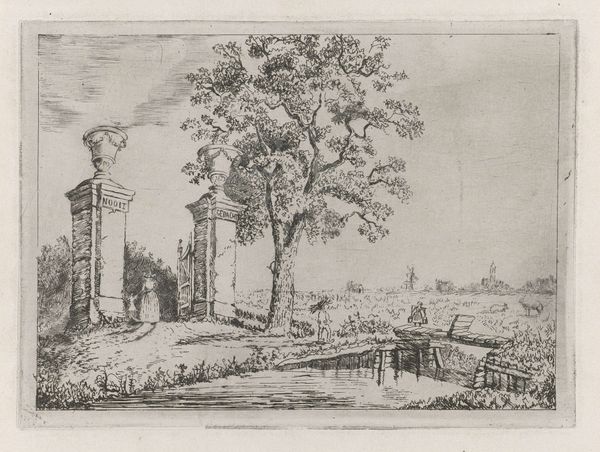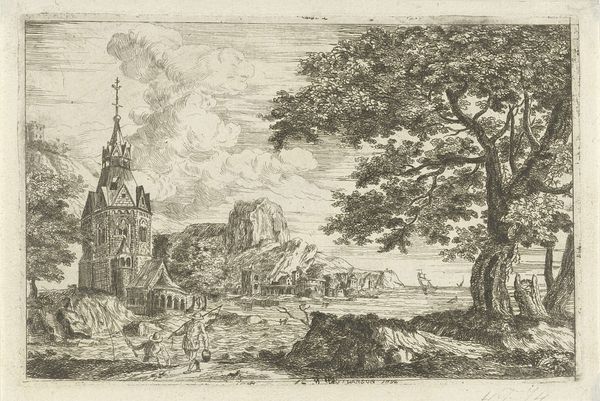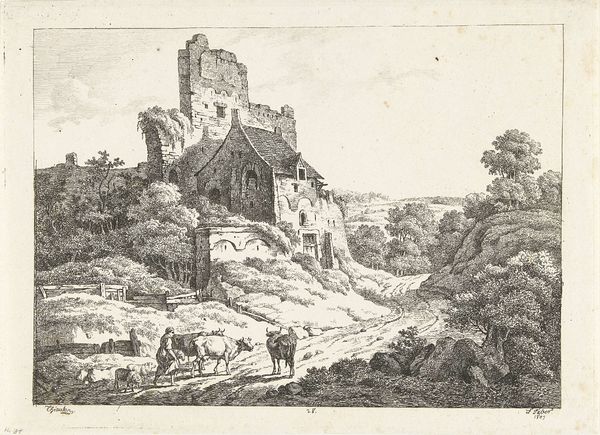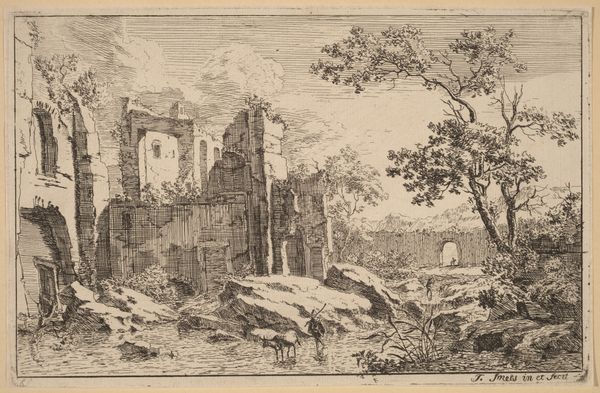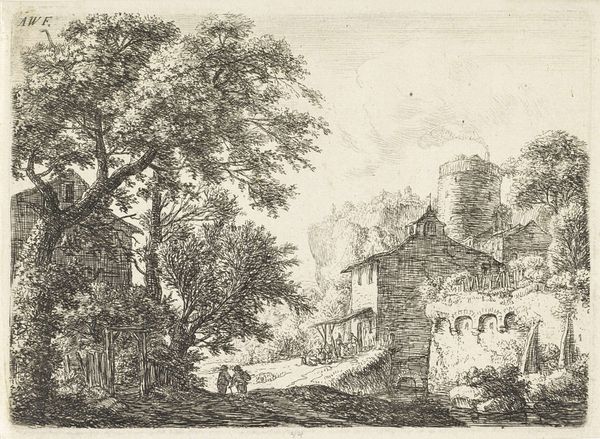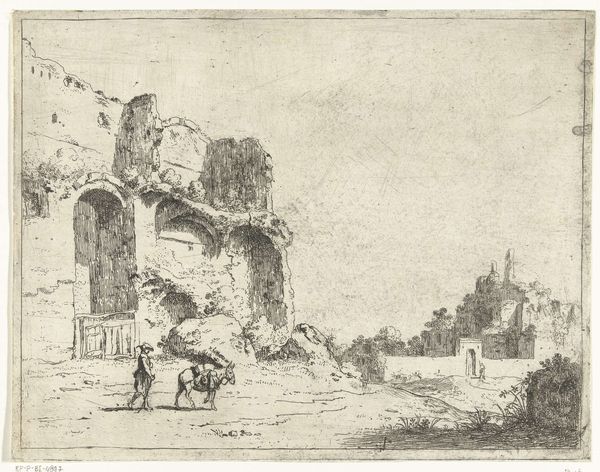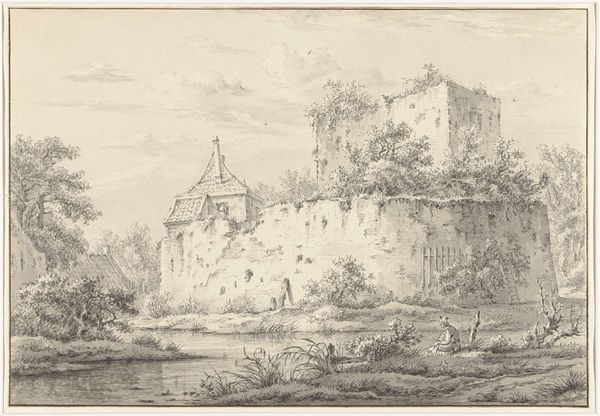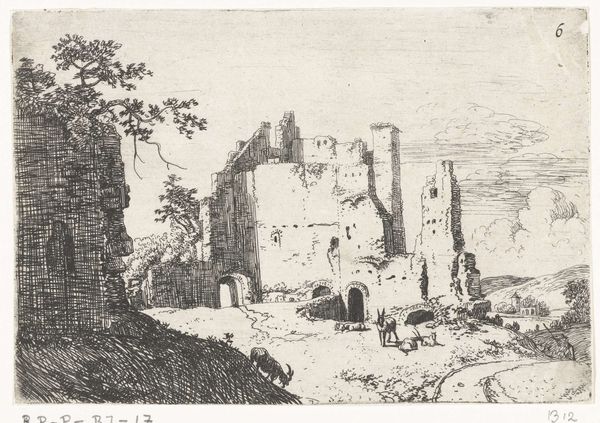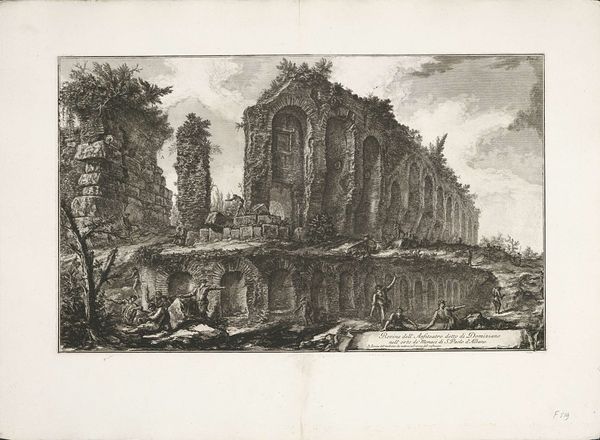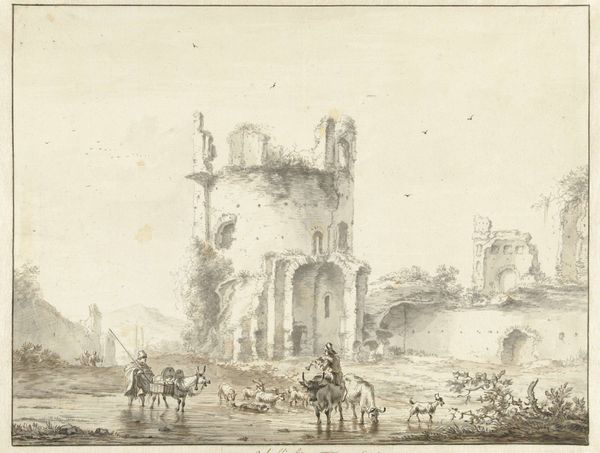
drawing, print, etching, paper, ink
#
drawing
# print
#
etching
#
landscape
#
paper
#
ink
#
romanticism
#
cityscape
#
history-painting
Dimensions: height 120 mm, width 163 mm
Copyright: Rijks Museum: Open Domain
Curator: The work before us is entitled "Landschap met stadspoort en ruïne," or "Landscape with city gate and ruin," an etching on paper rendered by Carel Frederik (II) Bendorp, circa 1835-1848. Editor: There’s a melancholic mood that this etching evokes. The architectural forms dominate the scene, yet their derelict state suggests a certain resignation to time. Curator: Absolutely. Note how Bendorp skillfully employs a tight tonal range. The nuanced interplay of light and shadow animates the dilapidated structure, highlighting the varied textures of brick, stone, and water. It’s as much about the materiality as it is about representation. Editor: Indeed, the ruined city gate acts as a powerful symbol. Gateways typically represent access and opportunity, but here, the ruin implies the inverse: decay, the end of an era, and perhaps, lost glory. It's interesting to consider this within the context of the romanticism movement. Curator: A point well-taken. The composition also draws the eye across the image, from left to right, mimicking the viewer’s mental traversal of a historic site. The architectural remnants and the human figures are carefully placed in relation to one another, creating spatial depth despite the print’s two-dimensionality. Editor: And it isn't merely about objective spatial relations but also a deeper emotional landscape. Ruins in art have always been charged with meaning, reminding us of mortality. In this piece, the broken arches over the water almost suggest a barrier, symbolizing an impasse, not just geographically but emotionally. Curator: We can also analyze how Bendorp utilizes line quality. Some lines are finer, describing detail, whereas broader, darker strokes indicate areas of damage or shadow. There's also this element of the "picturesque," deliberately arranging the decay into an aestheticized tableau. Editor: So, while Bendorp's technique is admirable in its precise and varied line work, it's truly the interplay of symbols – the decaying architecture, the figures amidst the ruin – that ultimately grant it enduring significance for me. Curator: An incisive note on which to end our look into the architecture and artistry found within this print. Editor: Agreed. An elegant glimpse into a moment defined by beautiful ruin.
Comments
No comments
Be the first to comment and join the conversation on the ultimate creative platform.
